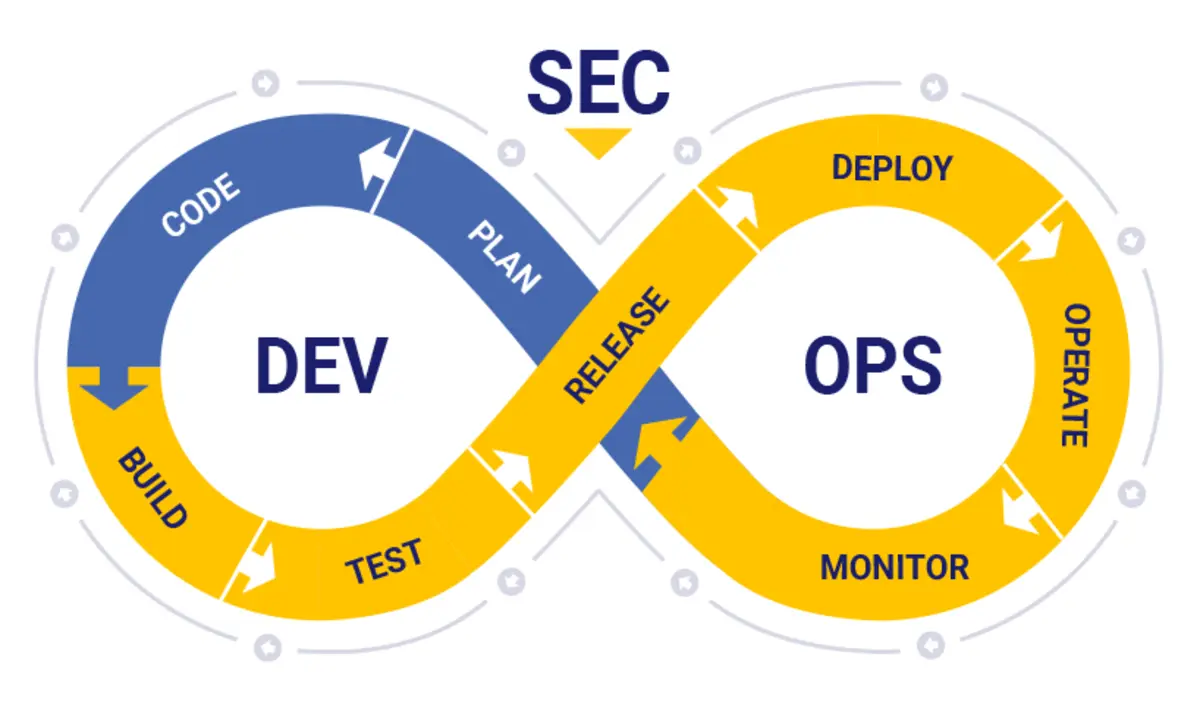6 Ways To Build A Strong DevSecOps Culture
There is less emphasis on security in DevOps, which instead prioritises closer cooperation between programmers and system administrators. DevSecOps aims to solve this problem by integrating security into the development and operation phases. When security is integrated into the process as a whole, spotting false positives or flaws is much less of a challenge.
Fostering DevSecOps Methodologies
Since DevOps teams typically put more emphasis on features and functionality, it might be difficult to establish a solid DevSecOps culture. The security teams, on the other hand, are very concerned about lowering cyber risk. These competing priorities make it challenging to establish an effective DevSecOps culture.
If this is something your business has struggled with, you’re in luck: you’ll find advice on how to establish a strong DevSecOps culture right here.
1) Take on an attitude of openness and ever-present education
Promoting openness is one of the best methods for creating a strong DevSecOps culture. Employees are better able to appreciate security’s significance and contribute to the company’s goal as a whole as a result.
To do this, the security and development teams need to work together in an atmosphere of mutual trust and efficiency. This transparency allows for more collaboration across departments, leading to steady progress. Without this, safety is compromised.
To further spread the DevSecOps culture, it is also recommended to implement a system of constant training and education. This helps the development and security teams adapt to the evolving needs of the business by teaching them about better policies.
2) Integrate Safety Measures Throughout Your Company
The principle of “DevSecOps” in computer programming and system administration. This 3D animation depicts a robot clicking a button on a computer screen.
Managing cyber risk has become a top priority for CEOs in today’s competitive business environment, as a direct result of rising consumer demands and market pressures. This, however, necessitates that all employees have an in-depth understanding of IT security. As the corporation integrates security measures across all departments, productivity should increase.
But how can this be done with accelerated turnaround times? Only by incorporating security into each and every stage of the process will this be possible.
- Requirements
- Gathering
- Design
- Writing New Code
- Deployment
- Operation
Continuous testing of capabilities at all stages requires special attention. Knowing where to start is crucial if your staff are going to successfully integrate security into their everyday work. Conduct a thorough evaluation to determine your areas of strength and improvement.
Also Read: What Is Network Latency?
3) Inspire Collaboration Across Departments
Collaboration between security and DevOps teams is essential for a healthy DevSecOps culture. This necessitates an atmosphere where team members are comfortable asking for clarification, disclosing relevant information, and doing complementary tasks. In this way, the process as a whole is made more effective by encouraging collaboration among employees.
After the software has been developed, developers often try to fix any remaining security problems in an effort to speed up the manufacturing phase. It exacerbates tensions between the two groups, which in turn reduces productivity across the board.
It’s a better approach than adding security in the end when the DevOps team is finished. Since this is the case, the only time the DevOps and security teams talk is when there’s an issue or an incident.
4) Focus on Outcomes
All problems should be fixed, although some are far more critical than others. Consequently, it’s not enough for the DevOps and security teams to simply set priorities for when and where to fix specific vulnerabilities. The point, rather, is to understand which outcomes are most consequential and why.
Facebook’s use of high-quality static as part of its programming process is a prime illustration of this phenomenon. The development team’s repair rate jumped from zero to 70 per cent after they stopped focusing on defects that were outside their normal process. The developers were able to pinpoint the most detrimental flaws in record time, allowing them to steadily improve the product over time.
This was made feasible by the significant reduction in false positives brought about by these improvements in the efficiency of bug fixes. Over time, we see a rise in the proportion of successful repairs and a decline in false positives.
5) Adopt a Developer-First Strategy
During coding review, developers spend a lot of time looking for potential problems to fix before releasing an application to the public. However, a large number of false positives are common when doing so. Consequently, the developer wastes a lot more time investigating and fixing problems that may not even exist.
Many builders’ difficulties in addressing issues during construction may be traced back to the high proportion of false positives generated by such methods. As a result, the developer would often abandon all other tasks in order to fix the false positive. To be successful, developers need to adopt a developer-first approach rather than this one. When put into practice, developers will be alerted to potential issues. Thus, the DevSecOps team would be able to deal with these concerns as they arise in the course of their work.
The nicest aspect of taking a developer-first stance is how quickly a security issue can be fixed by the developer while the product is still in development. This allows them to avoid losing time during production that would have been spent fixing issues.
6) Inspire Individualism in the Workplace
It’s important, as a leader, to let your team pick the methods and equipment they’ll use, given the circumstances. In order to establish a solid DevSecOps culture, it is crucial to provide team members with more leeway to foster creativity and accountability.
It’s also important for the team to have an articulated vision for its ideal culture. It might take some time, but doing so would guarantee that laws and rules are followed correctly in the future.
Conclusion
Businesses that put a premium on safety regard it as more of a way of life than a procedure. And a robust DevSecOps culture is essential for this to happen. Now, security can’t be ignored as it was before, thus it’s no longer a technological defect. This is a top priority, and the suggestions made above are only the beginning of the ways in which your business may make this a reality.




